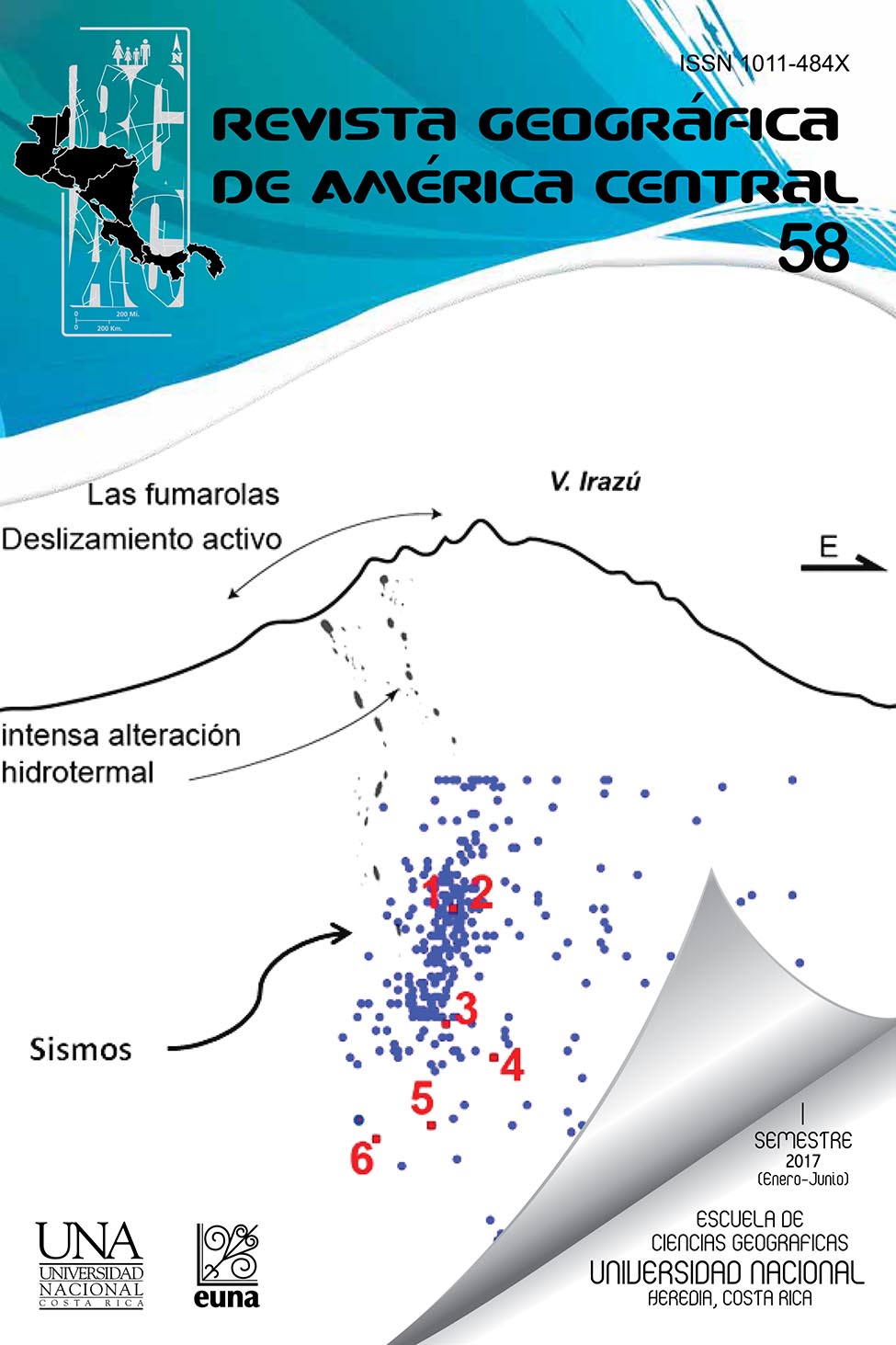GREENHOUSE GAS EMISSIONS INVENTORIES AS A TOOL THAT SUPPORTS THE CLIMATE CHANGE LOCAL AGENDA: SAN JOSE EXPERIENCE
DOI:
https://doi.org/10.15359/rgac.58-1.6Keywords:
Climate Change, greenhouse gases, emission inventories, San JoséAbstract
San José greenhouse gas emissions were estimated applying a methodological approach adapted from the IPCC guidelines and the GHG protocol for cities such as basic input to guide the local agenda on climate change. In total during the year 2011, 820 295 tons of equivalent CO2 were generated. In order of importance, mobile sources accounted for 84.7 % of emissions, followed by electricity consumption in the residential sector as a whole (7.7%) and fixed sources of industrial sector (1.4%). Direct emissions contributed to 90.9 % of the inventory while indirect (Scope 2 and 3) represent 9.1%. On average, each home generates about 0.41 tons CO2 eq / year; however, this indicator ranges from 0.66 tons of CO2 eq / year in Uruca to 0.33 tons of CO2 eq / year in Hatillo.
References
IPCC. (2000). Orientación del IPCC sobre las buenas prácticas y la gestión de la incertidumbre en los inventarios Nacionales de gases de efecto invernadero. http://www.ipcc-nggip.iges.or.jp/public/gp/spanish/gpgaum_es.htm
IPCC (2006). Directrices del IPCC para los inventarios nacionales de gases efecto invernadero. Instituto para las estrategias ambientales globales, Francia.
IPCC (2013). IPCC Fifth Assessment Report: Climate Change, 2013. (AR4). Recuperado de: http://www.ipcc.ch/publications_and_data/publications_and_data_reports.shtml.
Moss, J., Lambert, C. & Rennie, A. (2008). SME application of LCA-based carbon footprints. International Journal of Sustainable Engineering, 1(2), 132–141.
Ministerio de Ambiente, Energía y Telecomunicaciones. (2009). Estrategia Nacional de Cambio Climático.
Peters, G. & Hertwich, E. (2008). Post-Kyoto greenhouse gas inventories: production versus consumption. Climatic Change, 86, 51-66.
SEDEMA. (2013). Registro de emisiones de gases efecto invernadero del Distrito Federal, 2012. Gobierno del Distrito Federal.
Pulles, T, Kok, H, Quass, U. (2006) Application of the emission inventory model TEAM: Uncertainties in dioxin emission estimates for central Europe. Atmospheric Environment 40, 2321-2332.
Wang, Z. & Wang, C. (2015) How carbon offsetting scheme impacts the duopoly output in production and abatement: analysis in the context of carbon cap-and-trade. Journal of Clean Production 103, 715-723.
Wiedmann, T. (2009). A Definition of Carbon Footprint. Durham, UK, ISAUK Research & Consulting.
World Resources Institute. (2014). GHG: Global Protocol for Community-Scale Greenhouse Gas Emission Inventories.
Municipalidad de San José. (2011). Diagnóstico Cantonal 2011. Observatorio Municipal. San José, Costa Rica.
Downloads
Published
How to Cite
Issue
Section
License
Proposed policy for journals offering Open Access
Authors publishing their works in the Journal acknowledge and agree to the following terms:
a) Authors retain the copyrights to their works and guarantee the Journal the right to be the first to publish their works, under the Creative Commons License Attribution-NonCommercial-ShareAlike 4.0 International, CC BY-NC-SA 4.0 International (https://creativecommons.org/licenses/by-nc-sa/4.0/deed.es), which allows others to share works upon complying with the acknowledgment of authorship and mention of the Journal as the original publisher of the work.
b) Authors are permitted to separately establish additional agreements for the non-exclusive distribution of the official edition of the work published in the Journal (for example, authors may desire to place the work in an institutional repository or incorporate it into a book that is to published elsewhere) so long they acknowledgment to recognize the Journal as the original publisher. The aforementioned additional agreements must respect the terms of the non-profit character and sharing philosophy of the original license (CC BY-NC-SA 4.0 International, https://creativecommons.org/licenses/by-nc-sa/4.0/deed.es).
c) Authors are encouraged to archive the post-print or editor/PDF version in Open Access repositories.






 REVGEO is licensed under https://creativecommons.org/licenses/by-nc-sa/4.0/deed.es
REVGEO is licensed under https://creativecommons.org/licenses/by-nc-sa/4.0/deed.es
.svg_4.png)

_(1).png)
_(1)_(1)_(1)_1.png)
(2)(1)(1)(1).png)
